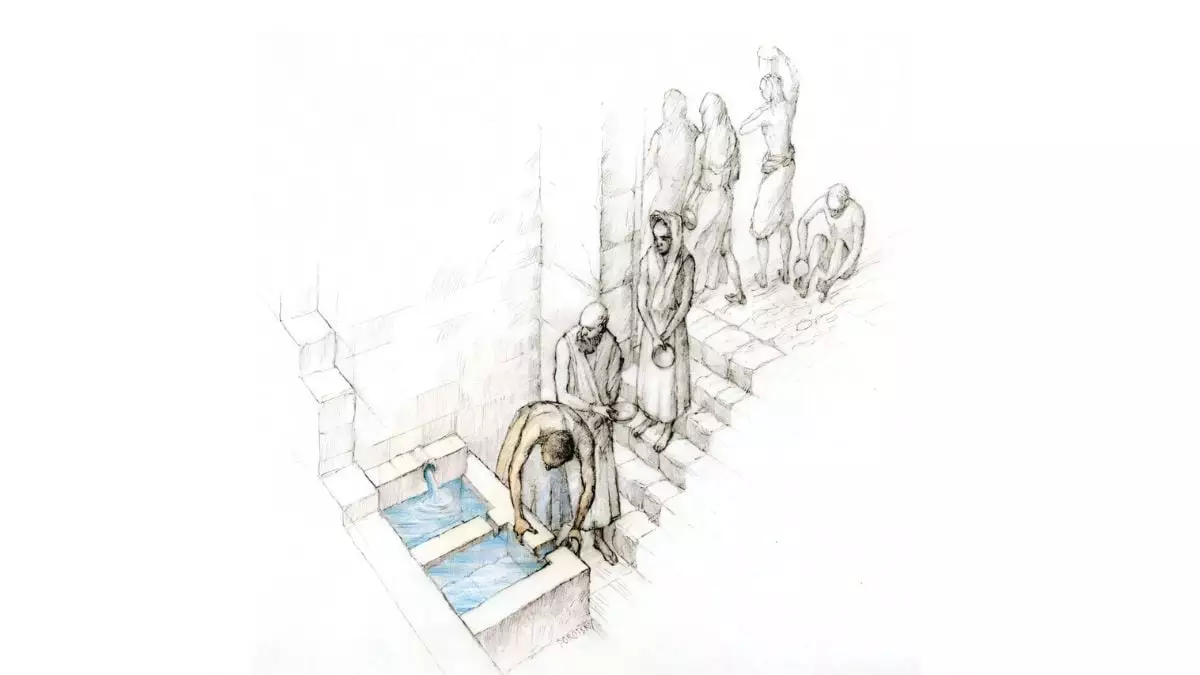An extraordinary archaeological discovery in northern Israel has not only unearthed a glimpse into the daily rituals of ancient priests but also showcased the intricate relationship between water and religious practices in the bygone era of the Israelite kingdoms. The excavation reveals a specialized bathhouse at a sanctuary thought to facilitate ritual cleansing among worshippers, specifically the priestly class. This find forces us to confront our preconceived notions about ancient religious practices and broadens our understanding of how rituals were conducted as a means of purifying the soul and body alike.
The Architectural Brilliance Behind Ritual Bathing
The bathhouse features a dual-room layout, with one area plastered in a striking yellow and another in serene blue. Such design choices indicate a deliberate consideration of aesthetics in relation to spiritual significance, inspiring reflection on how visual elements may influence one’s spiritual immersion. The basin, modest in size and unheated, raises intriguing questions about the nature of these rituals. Unlike the grand immersion baths many might assume were the norm, this basin suggests that participants stood within, invoking the cool rushing waters of the nearby Jordan River. In a region where temperature and comfort are paramount, one wonders how the discomfort of cold water factored into their beliefs about purification and connection to the divine.
Tracing Religious Lineages and Cultural Crossroads
Times of destruction can often lead to moments of rebirth. Following the desecration of the first temple, a new temple arose, preserving prior practices but enabling adaptations over the centuries. This continuity provides a rare insight into the evolution of worship amid historical upheaval. The varying layers of worship—evident through artifacts like a limestone fragment with dual-language inscriptions—underscore the blending of cultures that characterized the ancient Near East. The presence of imported ceramics and multilingual inscriptions indicates that this sanctuary wasn’t just a local hub; it attracted pilgrims from near and far, further asserting its role as a cross-cultural religious site.
Deeper Insights Await
Despite the substantial findings, the sanctuary at Tel Dan remains a tantalizing puzzle. Archaeologists urge for further excavations, hoping to unveil additional layers that could clarify the identities of the deities worshipped there and possibly reveal lost practices. The prospect of unraveling more about the religious behaviours of ancient Israel resonates deeply within contemporary dialogues about faith, identity, and the origins of rituals we may take for granted today.
The ongoing exploration at this site beckons modern society to reflect on its own rituals and the inherent meanings we assign them, further bridging the gap between past beliefs and present-day spirituality. The preservation of rituals—from the mundane to the profound—continues to shape cultural identities, making our understanding of these ancient practices not merely an academic curiosity but an essential component of our shared human experience.


Leave a Reply